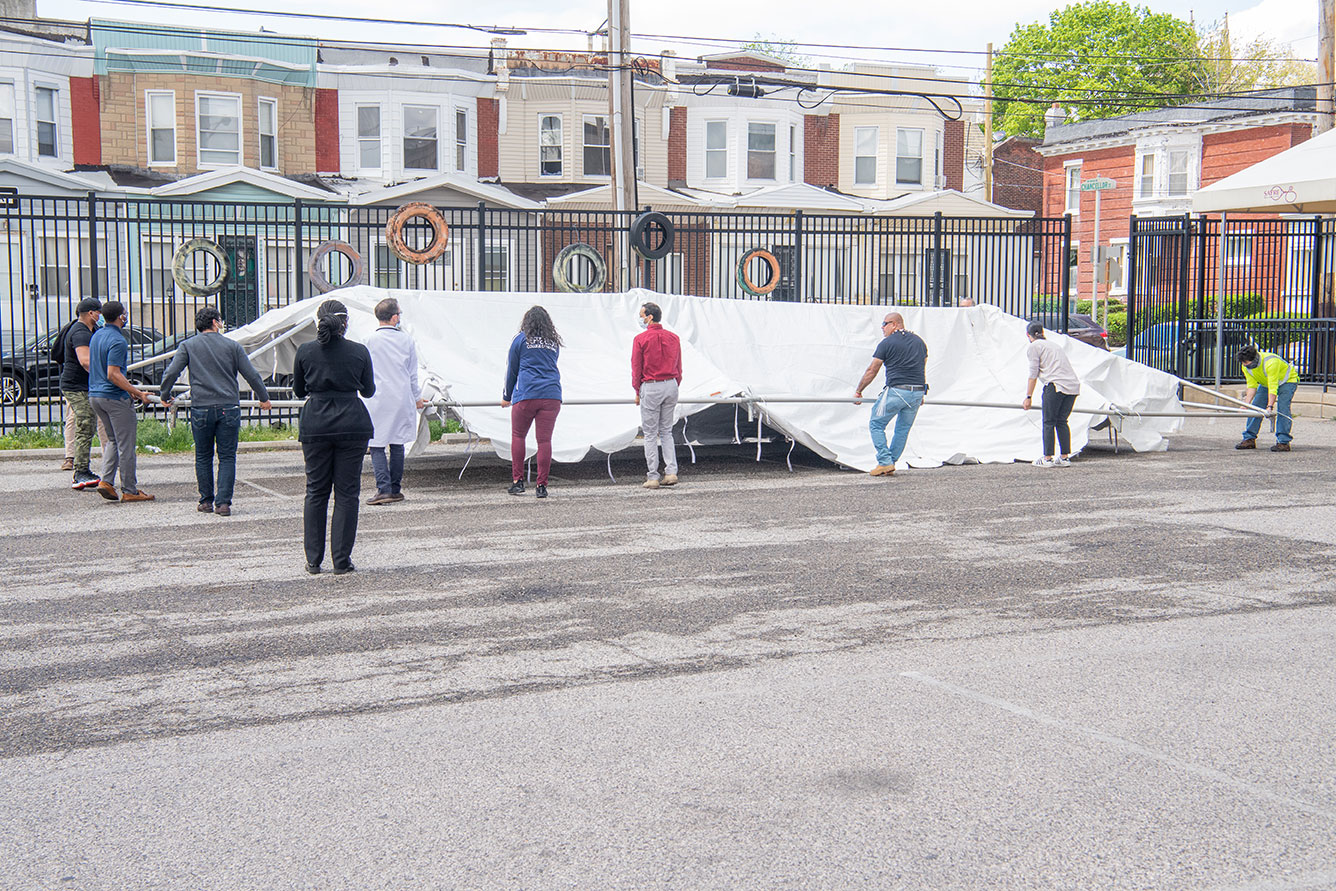

Cars crowded along 59th Street and wrapped around the block on the first day that Sayre Health Center opened its COVID drive/walk-through testing site in the Cobbs Creek section of West Philadelphia in April.
Despite the long line, Sayre Medical Director Kent Bream, MD, greeted each of the 121 men, women, and children patiently, with a joke and a laugh. The patients cracked a smile in return. They seemed to share a common emotion: relief.

Kent Bream, MD, huddles with staff the day before the COVID-19 testing site opened in April.
“It’s a really empowering thing to have access to care. Whether the result of the test is positive or negative, having access is an intervention in itself,” said Bream, who is also an associate professor of Clinical Family Medicine and Community Health in the Perelman School of Medicine.

Shikeya Brown, an associate director at Sayre Health Center, greets and registers patients at the drive/walk-through COVID-19 testing site.
Each patient was not only tested for COVID-19 with a nasal swab, but also screened for anxiety and depression. The services tapped into a need that had been hard to come by as the outbreak spread across Philadelphia the past two months.
The pandemic has highlighted profound racial and socioeconomic inequities in health care. In Philadelphia, more than half of coronavirus deaths are among African Americans, even though they make up 40 percent of the city’s population. African Americans are dying at a rate of more than 30 percent higher than white patients, according to city data.

The Dr. Bernett L. Johnson, Jr., Sayre Health Center is located at 5800 Walnut Street, at the rear of Sayre High School.
In 2006, Bernett L. Johnson, Jr., MD, a former chief medical officer at the Hospital of the University of Pennsylvania, opened Sayre Health Center as a way to link resources between the health system and its surrounding community. As COVID-19 hit the Philadelphia area, University of Pennsylvania Health System CEO Kevin B. Mahoney sought to expand the longtime partnership with Sayre to ramp up testing in Cobbs Creek.

Penn Medicine and Sayre Health staff raise tents in the Sayre Health Center parking lot to prepare for the opening of the COVID-19 testing site.
Penn deployed nurses, doctors, physician assistants, as well as Penn Police and operational support, to bring the makeshift site to life within two days. Nida Al-Ramahi, MHA, a Penn Medicine administrative fellow, led the operation, pulling from her experience leading Penn’s other drive-through COVID site in West Philadelphia. During its first week in operation, the testing site saw a volume of 906 patients, more than 88 percent of whom identified as African American.

Ashwin Gupta, PA-C, a physician assistant at Sayre Health Center, speaks with a patient.
The site ran so efficiently that Bream saw that he had an opportunity to expand the services on offer: Using a 5-minute window available while patients wait between test ordering and swabbing, they now receive screening for anxiety and depression. Patients who fit the criteria for either diagnosis are provided either with a “brief intervention” or linked to further resources.
“As people self-isolate, these kind of small but meaningful interpersonal interactions have been missing,” Bream said. “Being here gives people a small sense that both we and they can control what’s happening. The feeling of disempowerment can be managed.”


 Testing for COVID-19, Right in the Neighborhood
Testing for COVID-19, Right in the Neighborhood





